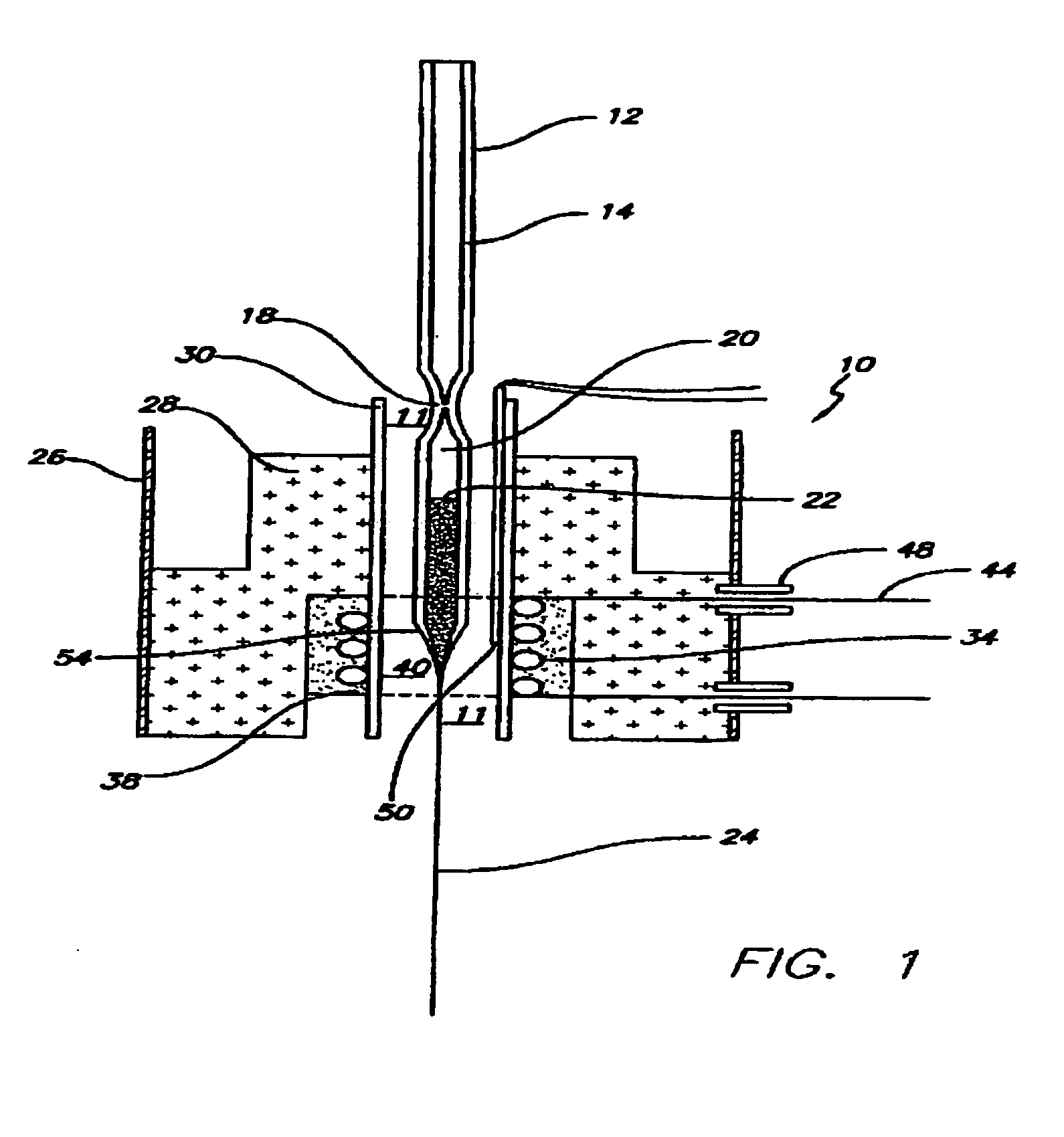Methods of drawing wire arrays
- Summary
- Abstract
- Description
- Claims
- Application Information
AI Technical Summary
Benefits of technology
Problems solved by technology
Method used
Image
Examples
Embodiment Construction
[0034]In the following paragraphs, the presently claimed inventions are described by way of example with reference to the attached drawings. Throughout this description, the preferred embodiment and examples shown should be considered as exemplars, rather than as limitations.
[0035]Before starting a description of the Figures, some terms are defined herein.
[0036]Chalcogenides: Group VI elements of the periodic table.
[0037]Chemical Vapor Deposition: Deposition of thin films (usually dielectrics / insulators) on wafer substrates by placing the wafers in a mixture of gases, which react at the surface of the wafers. This can be done at medium to high temperature in a furnace, or in a reactor in which the wafers are heated but the walls of the reactor are not. Plasma enhanced chemical vapor deposition avoids the need for a high temperature by exciting the reactant gases into a plasma.
[0038]Doping: Deliberately adding a very small amount of foreign substance to an otherwise very pure semicon...
PUM
| Property | Measurement | Unit |
|---|---|---|
| Temperature | aaaaa | aaaaa |
| Temperature | aaaaa | aaaaa |
| Temperature | aaaaa | aaaaa |
Abstract
Description
Claims
Application Information
 Login to View More
Login to View More - R&D
- Intellectual Property
- Life Sciences
- Materials
- Tech Scout
- Unparalleled Data Quality
- Higher Quality Content
- 60% Fewer Hallucinations
Browse by: Latest US Patents, China's latest patents, Technical Efficacy Thesaurus, Application Domain, Technology Topic, Popular Technical Reports.
© 2025 PatSnap. All rights reserved.Legal|Privacy policy|Modern Slavery Act Transparency Statement|Sitemap|About US| Contact US: help@patsnap.com



